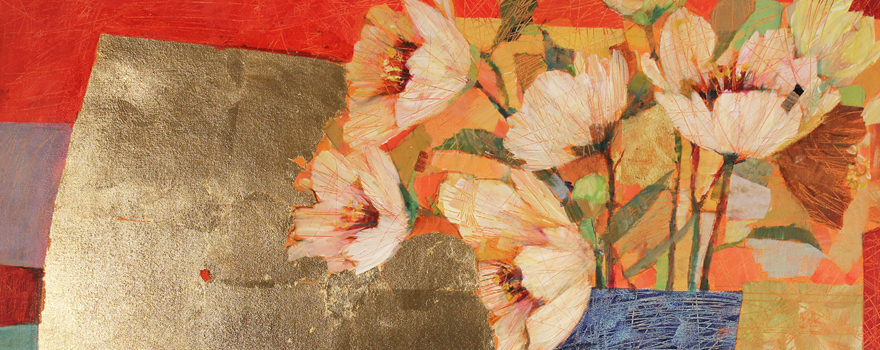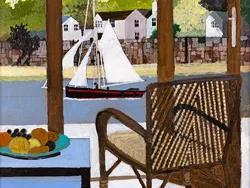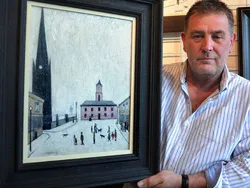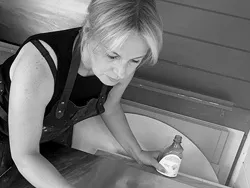With precisely a century between them, Gustav Klimt and Sally Anne Fitter share an enchanting artistic resemblance, melding decorative and fine art to create a hybrid genre of defining beauty.
Born into relative obscurity in 1862, Baumgarten, Gustav Klimt would go on to become Austria’s ‘golden’ prince of Art Nouveau, achieving wealth, celebrity and critical acclaim within his own lifetime. His path to success, however, was not without controversy. Rallying against the conservatism of the Viennese art establishment, Klimt became a founding member of the subversive Vienna Secession in 1897. As well as a showcase for Klimt’s scandalously salacious paintings, the group also bolstered the careers of many unconventional young artists, including Klimt’s protégé, Egon Schiele. A devotee to beauty itself, Klimt designed a glittering, florid world for his figures to inhabit, the essence of which can indeed be glimpsed in the art of today.
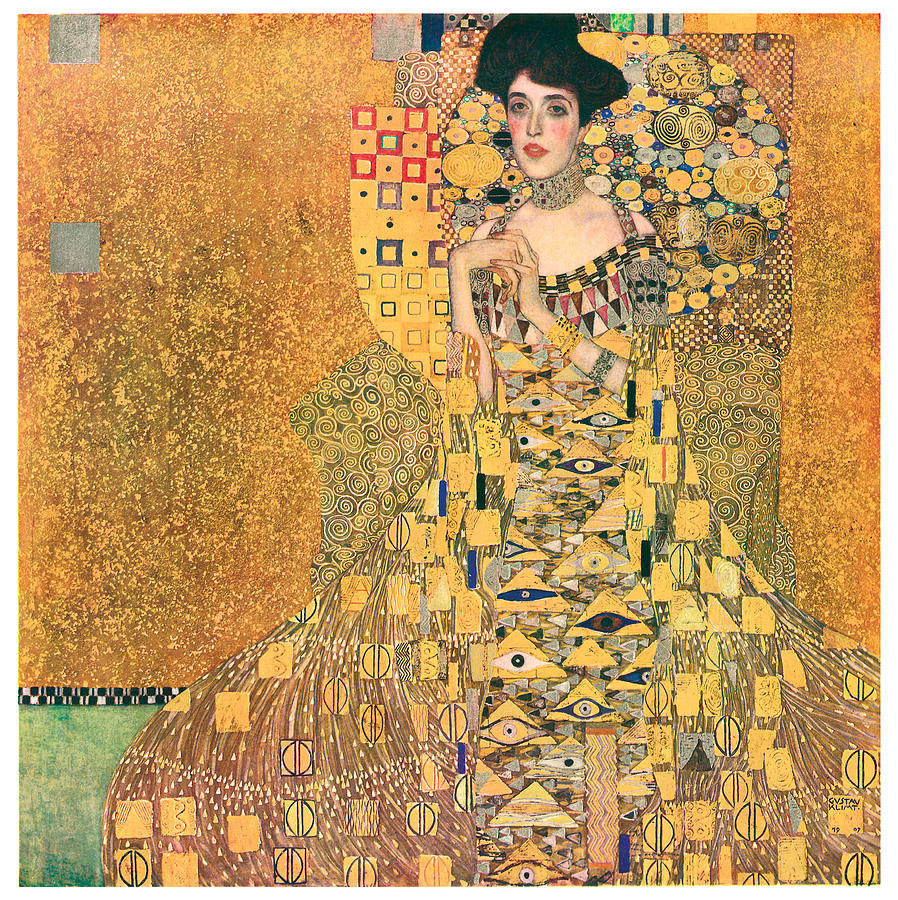 |
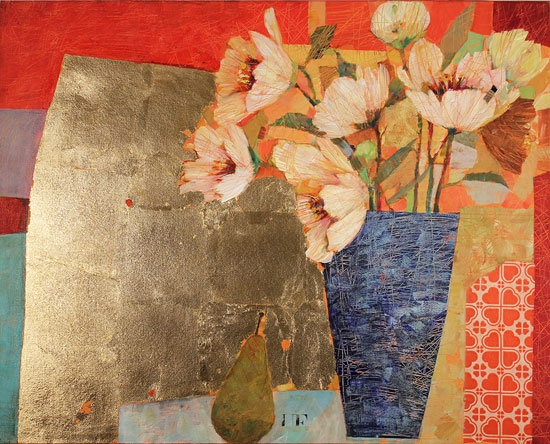 |
| 'Portrait of Adele Bloch-Bauer I' by Gustav Klimt | 'The Gold Table' by Sally Anne Fitter |
| Oil, silver and gold leaf on canvas | Acrylic and gold leaf on canvas |
Having studied ceramics and textile before establishing a flourishing textile studio of her own, Sally Anne Fitter shares Gustav Klimt’s strong sense of design when approaching her artwork. Turning to professional painting in 2003, Sally has iterated her triumphant career in design and achieved significant success as an artist. Like Klimt, Sally elevates her subjects, revelling in the beauty of the everyday. Sally’s pieces may echo the decadence of Klimt’s work, but her fascinating technique of collage, acrylic paint and scraping are entirely unique. In her hands, a simple pear becomes a rich, glowing entity, a vase of flowers like a Byzantine mosaic and a humble kitchen table, transforms into a priceless tablet of gold.
Bold to the last, Gustav Klimt’s ‘golden period’ has illuminated art history forevermore, but perhaps the greatest gift of Klimt’s innovations is the inheritance of his glimmering legacy. While sharing in the joy and decorative essence of Klimt’s work, Sally Anne Fitter creates artwork of sublime singularity. A painter of dazzling and inspired instincts, she uproots the extraordinary undercurrents of commonplace objects and dares the viewer to share in her own vision.
